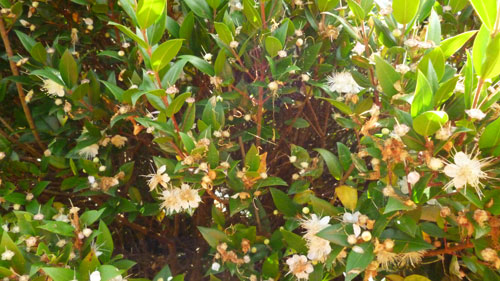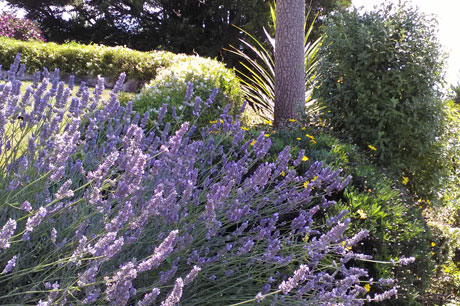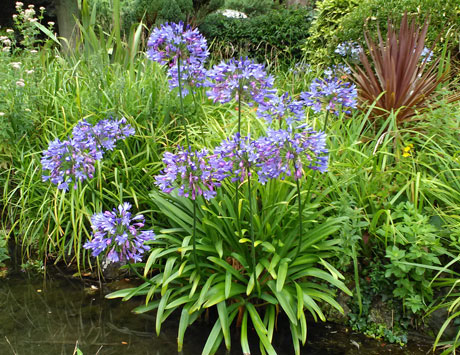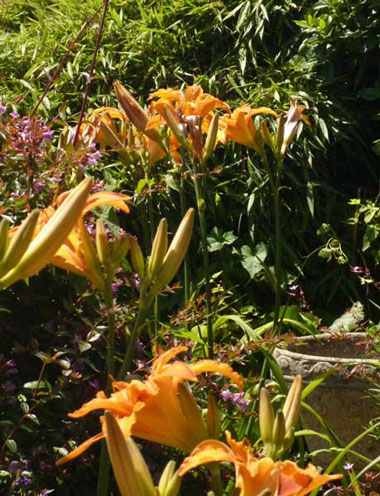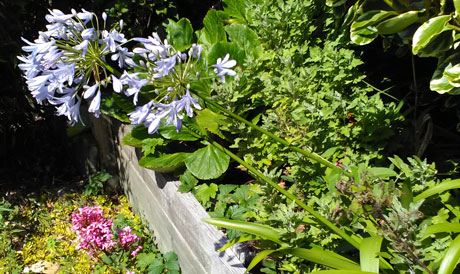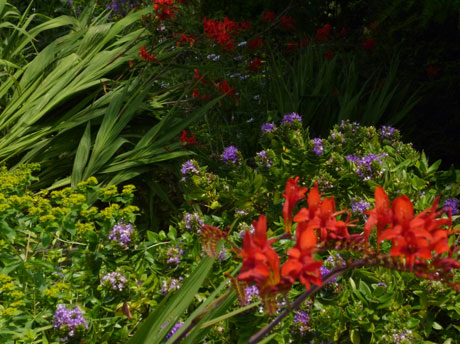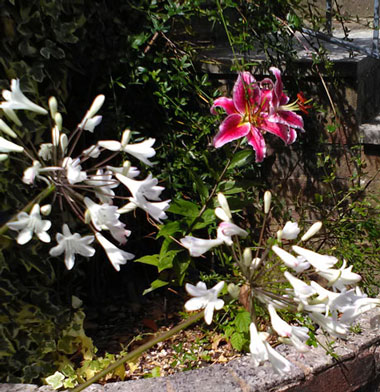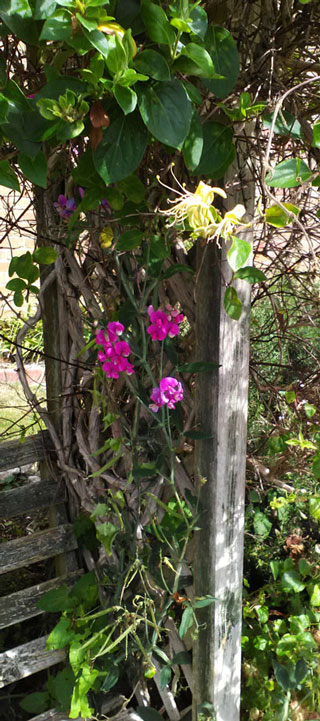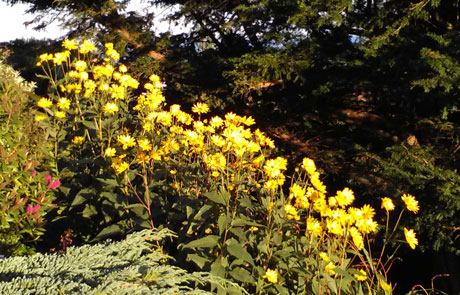Invasive exceptions
Well, it all sounds very nice and harmonious, and indeed most plants have a amazing way of growing together without disrupting the habitat of the others. But just occasionally there have been some disastrous introductions from overseas. The arrival of Himalayan balsam and Japanese knot weed in the 19th. century have not exactly been beneficial for the UK countryside.
These are plants that have proved highly invasive because they have few, if any, natural predators or diseases in the British Isles. Thus, if left unchecked, local native plants are simply smothered, and any invertebrates and the wildlife that rely on them will invariably suffer, too. There is an official list of invasive plants, and any sign of them must now bring forth a rapid application of herbicide and a cordoning off of the area until the authorities are absolutely certain the plants are gone.

A paler form of Agapanthus against a rich combination of foliage: the waxy, oval leaves of Bergenia, (known colloquially as ‘elephant's ears’) and which comes originally from central Asia and the Himalayan region, alongside those of yet-to-flower chrysanthemums - which come from China and neighbouring areas in East Asia.
Carry on Gardening
Those rare exceptions of invasive species becoming a problem will not discourage gardeners from experimenting, of course. People are always attracted to the exotic. And hybrids, too, are continually being produced.
